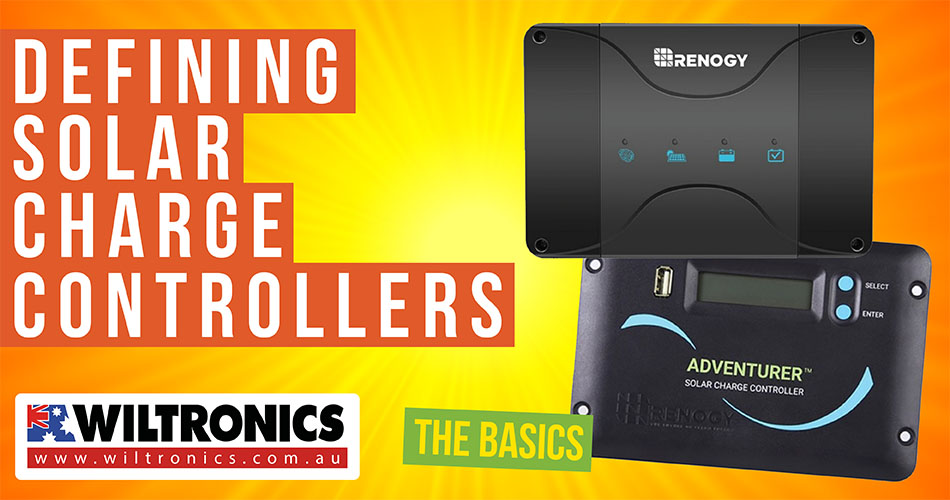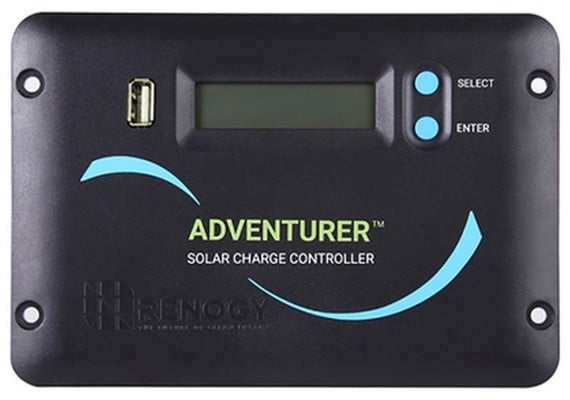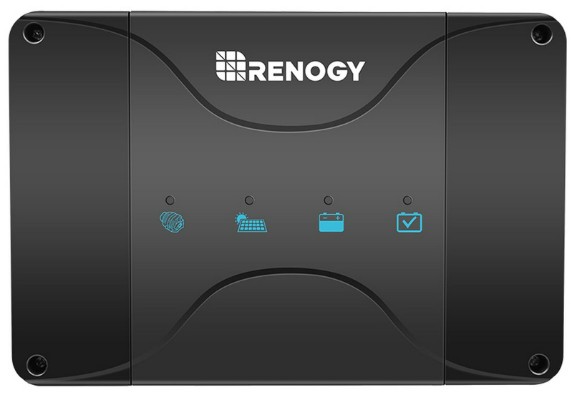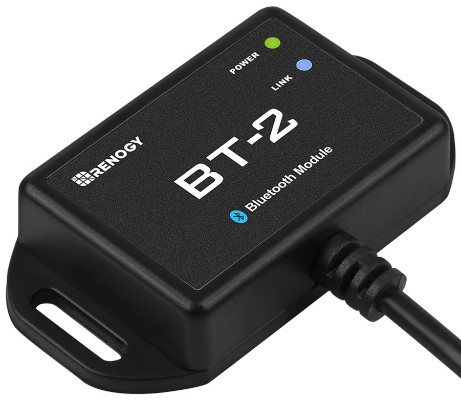Defining What Solar Charge Controllers Are: The Basics
July 25, 2022

What are solar charge controllers, and why are they essential for solar panels?
Solar charge controllers are one of the key components of a solar panel system with a battery. A great example of this is an off-grid system.
They work as ‘charger regulators’, keeping batteries from overcharging. And when the battery is nearly full, they send a trickle charge.
They smooth out variability so the batteries can receive power at a constant and safe rate. Solar charge controllers can be more advantageous than you thought, but do you need one?
Depending on your solar system, you may or may not need a solar charge controller. This post will go through everything you need to know (the basics) about this tool.
Solar Charge Controllers Explained
A solar charge controller regulates electricity generated by off-grid solar panels. It ensures that deep-cycle batteries are not overcharged during the day. Plus, it makes sure the power does not run back to the solar panel overnight and drain the batteries.
Solar charge controllers direct the voltage and current hailing from the solar panels to the electric cell. Generally, electric storage devices need around 14 – 14.5V to get completely charged.
12V boards/panels provide in the ballpark of 16 – 20V. If there is no regulation, the batteries will be damaged from overcharging.
A solar charge controller is available in two different types: PWM and MPPT. How they each perform in a system is very different. We will explain each as we go further in the post.
How Do Solar Charger Controllers Work?
Electricity flows from high voltage to low voltage. When it comes to solar panels, they produce the most energy during the day.
Their voltage is high, while the battery bank’s voltage is low. Excess electricity is then sent to be stored in the battery.
Meanwhile, at night, the battery has a higher voltage than the solar panels. One main reason is they are all charged up from the day.
To stop this high voltage from flowing to the panels, enter solar charge controllers. They step in to keep the electricity in place.
Suppose the battery charger is empty or close to it. A solar charge controller directs a great deal of power to the battery and charges it quickly.
Once full or in use, the controller will send a smaller amount of power to the battery via a trickle charge. This keeps the battery always ready to supply power.
Further, solar charge controllers disconnect non-critical loads automatically. For one, when the voltage falls below a certain threshold from the battery bank. This process is called low-voltage disconnect (LVD), and it prevents over-discharging.
The Major Functions
The primary function of solar charge controllers is to control the amount of charge entering and exiting the battery. But they can perform several other useful functions, making them extra beneficial.
1. Block reverse current
This function eases the one-way current flow from the solar panel to the battery. Then, it blocks the reverse flow during the night.
This helps prevent batteries from unnecessary discharging, and it increases the battery uptime.
2. Under voltage protection
Under voltage occurs when the batteries have lost 80% of their charge. It is recommended to take the battery out of the circuit and connect it back only during charging.
But suppose the charge level is proportional to the voltage level. The charge controller will cut out the battery at a certain voltage level. This helps prevent under-voltage situations.
3. Configure control set points
Various set points could be edited and re-programmed using the charge controllers. This helps in fine-tuning your battery charging and discharging cycles.
As a result, it ensures the most efficient performance and longer life.
4. Display and metering
Various parameters could be monitored using the display screen of charge controllers. Some commonly monitored parameters include the following:
- Voltage level
- Charged percentage
- Current Discharge time at fill load
5. Troubleshooting and events history
Modern solar charge controllers feature an inbuilt memory to save events. Some even have alarms with a date and time stamp. These events and alarm history help to enable quick troubleshooting.
6. Prevent battery overcharge
Overcharging could significantly reduce the lifetime of a battery. This is where solar charge controllers come in. They stop charging the batteries once they are sufficiently charged.
Types of Solar Charge Controllers
Charge controls come in all shapes, sizes, features, and price ranges. They also come in two general types:
- PWM (Pulse Width Modulated)
- MPPT (Maximum Power Point Tracking)
1. PWM (Pulse Width Modulated)
A PWM charge controller connects your solar array directly with a battery bank. While the battery charges, the voltage increases.
This leads to a boost in the solar panel voltage charging the battery. You need to make sure you match the nominal voltage of the solar array with the voltage of the battery bank.
With a PWM charge controller, a 12-volt solar panel is needed to charge a 12-volt battery and so forth. But suppose you used a PWM controller with a 12V battery but 48V solar panels. The PWM will not harvest the extra energy produced, and it will only gather 12V.
2. MPPT (Maximum Power Point Tracking)
An MPPT charge controller works more sophisticatedly than its PWM counterpart. It identifies the best working voltage and amperage of the solar panel exhibit.
Plus, it matches that with the electric cell bank. The outcome is an extra 10-30% more power out of your sun-oriented cluster than a PWM controller.
First, it measures the VMP input voltage of the solar panel. Then, it down-converts the PV voltage to match the battery voltage.
It takes the high voltage from the panel and reduces it to match the battery voltage, which is less. With an MPPT, you can use a higher voltage solar array than your battery system.
For one, your charge controller will reduce the voltage. Thus, it does not overwhelm your battery.
Note: Make sure that the VOC of your panels is under the permitted voltage of your charge controller.
VPM and VOC explained:
VPM (Voltage at Maximum Power) occurs when the solar module operates at peak performance. Under perfect conditions, this is the voltage a solar panel produces.
Whereas VOC stands for Voltage at Open Circuit. Also known as Open Circuit Voltage (OCV). It is the maximum voltage that the solar panel can produce with no load on it.
For instance, measured with a multimeter across the open ends of the wires attached to the panel. If two or more panels are wired in series, it will be VOC of panel one + VOC of panel 2, etc.
Installation Process
When installing the controller, you must connect and disconnect the following in order:
- Battery to the controller first
- PV array to the controller
- Electrical load to the controller
The battery provides power to the controller. So when disconnecting, you reverse that order.
Ensure the solar and loads are disconnected before connecting/disconnecting the battery. Connections between the battery, load, PV array, and controller should also have disconnect switches.
This is to enhance safety and facilitate ease of installation and disassembly.
Get Your Solar Charge Controllers Here!
We offer a wide range of high-quality solar regulators/controllers. Check out our available units to meet your needs.

1. PWM Solar Charge Controllers
We have a large selection of PWM controllers ideal for small-scale applications. They feature electronic switches that connect solar energy to a battery.
Once the battery fully charges, the current declines and remains in a low-maintenance state.

2. MPPT Solar Charge Controllers
A variety of controllers feature MPPT for maximum efficiency and charge rate. They are more efficient depending on the battery voltage and the operating voltage of the solar panel.

3. Renogy Solar Charge Controller Accessories
We also offer a large selection of Renogy Solar Charge Controller Accessories. These extras are guaranteed to help you get the most out of your solar system.
Available units include
- Battery Voltage Sensor
- The BT-1 and BT-2 Bluetooth Modules
- Renogy Monitoring Screen for DC-DC MPPT Charger
The Bottom Line
Charge controllers help protect and increase the battery life of solar power systems. The suitable controller for your solar power also ensures a longer battery lifespan.
Now that you know how solar charge controllers work, we hope you find the perfect model for your needs. When buying a charge controller, carefully pick a high-quality brand, set it up and let it do its job.
Is generating electricity with solar power appealing to you? Consider adding solar panels to your home to help you create power and save money.
And you may not know it, but solar cables are also a critical part of a solar panel system. Read our guide on ‘Everything You Need to Know About Solar Cables’ to know more about them!
© Electrotech Brands Pty Ltd 2022


Write a Comment
You must be logged in to post a comment.